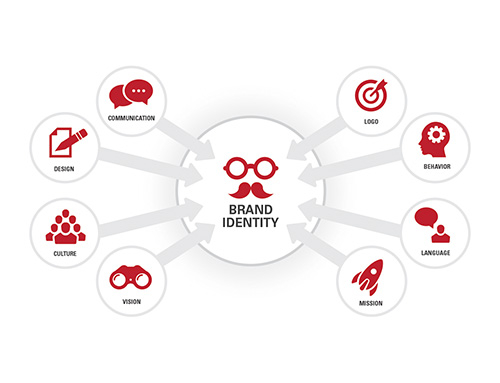The acquisition of new marketing technology enables new ways of engaging with prospects and customers, but only when coupled with existing organizational capabilities. We’ve identified five areas that – when answered honestly – truly assess where an organization currently resides in their journey to digital marketing maturity:
- Insights & Intelligence
- Organizational Alignment
- Inbound Marketing
- Demand Generation
- Attribution & Analytics
Based on this, Quell has developed a Digital Marketing Assessment Tool (DMAT) with 9 to 16 questions in each of the five areas. The questions are independent of technology platforms and are designed to identify what a company is actually doing today to engage effectively with their customers.
“Digital marketing is customer-driven and enabled by technology that is used to effectively engage audiences at every stage of the customer journey.”
The most recent Marketing Technology Landscape Supergraphic contains 6,829 marketing technology solutions from more than 6,200 unique vendors. The inaugural version of the Supergraphic in 2011 included only 150 platforms, and even four years ago included fewer than 1,000. The proliferation of platforms has been driven by market demand and by billions of dollars in venture capital and private equity funds invested in the sector, including $14 billion in 2017 alone.
Unfortunately, chasing ever-larger marketing technology “stacks” hasn’t resulted in the dramatic improvements in marketing and sales results that most companies have been expecting from their investment. While there are many reasons for this, it appears that at some point technology has become the objective, rather than a means to an end. The focus should always be on using technology to engage and influence at every point in the customer journey. To do that requires technology. Technology is necessary, but not sufficient. This challenge was the motivation behind the launch of Quell’s DMAT.
No question on the assessment is more important – or weighted more heavily – than the first one, “Does your company routinely utilize data to make important marketing decisions?” If important decisions are primarily made by the gut feel of senior marketing leadership without the benefit of being informed by data, the answer is “No.” If decisions are sometimes informed by data but it has not been internalized into the decision-making DNA of the organization, the answer is “No.” It is this data-driven decision-making capability – more than any other factor – that distinguishes those organizations able to fully leverage digital marketing technologies from those that cannot.
Other questions in the Insights & Intelligence section assess strategic marketing capabilities such as customer segmentation, the development of personas for purchasing decision-makers and influencers, assessing your own and competitor’s capabilities using SWOT analysis, and utilizing voice of the customer (VOC) research for developing new digital content and campaigns.
The next section builds on the insights and business intelligence capabilities of the marketing organization to assess whether the entire organization – and most importantly, the sales team – is aligned around the goal of using digital marketing tools effectively. Key to this is a C-level sponsor that can drive the adoption of digital marketing by allocating budget, ensure alignment between sales and marketing on lead generation and KPIs, and empower the marketing organization to drive both strategic development and tactical execution. Other questions in the Organizational Alignment assessment specifically address the use of a CRM system (a foundational technology for virtually all digital marketing initiatives), account-based marketing tools, internal roles and responsibilities, and agency partnerships to supplement your internal skill sets.
Inbound Marketing is the strategy around attracting users via company-generated content rather than vying for their attention in traditional marketing channels. Content marketing, search engine optimization (SEO) and paid search are the key capabilities in this section of the assessment, all designed to bring in new users to the company’s digital properties. Having a website that provides a superior customer experience, including responsive design for the 60-70% of website visitors who arrive via mobile devices, is critical. Providing customer-centric navigation (typically matched to customer segments or buyer personas) and search capabilities, as well as making appropriate use of video and downloadable PDF content are basic user expectations. Having a content management system (CMS) that allows easy and rapid updating of website content by the marketing team (without going through the IT department) and easy access to website analytics enables the marketing team to assess customer satisfaction with the online user experience and make continuous improvements.
Nothing is more emblematic of the ascendancy of technology within this space than marketing automation platforms. But all too often, the technology is acquired with no real sense of the rationale behind it, and it becomes just a more sophisticated way of doing the same “batch and blast” type of email marketing that can be completed with much less expensive systems. We suggest that before any technology is purchased, make the effort to diagram out a sequence of new onboarding emails, or how the technology would be used to trigger different “nurture” tracks based on a customer’s online engagement, or how the technology could be used to enable a series of webinars to demonstrate thought leadership and drive lead volume. In other words, focus on how you plan to use the technology to improve customer engagement, which will help drive the acquisition of the right technology, and the right training and implementation strategy to achieve the desired results.
Other questions in the Demand Generation section of the assessment focus on maintaining opt-in databases of email addresses for prospects and customers, maintaining active social media channels, using digital display advertising for brand awareness and lead generation, and routinely testing alternative subject lines and creative in your outbound digital campaigns.
Finally, and perhaps most importantly, the key differentiator of digital marketing is Attribution & Analytics that can track sales pipeline and realized revenue back to the marketing investments which generated it. This is a critical piece of digital marketing success that leads to a positive feedback loop of increased customer engagement, leads, and company revenue. Key to this is having clear KPIs for success in each digital channel, the ability to use some type of single touch or multi-touch attribution for campaign results, and the ability to calculate marketing return on investment (ROI) using both risk-adjusted sales pipeline and realized revenue. Having campaign dashboards set up in your CRM or marketing automation platform can help enable these critical marketing and sales initiatives. Other questions in this section assess the ability of your organization to either “fail fast” or use the success of marketing campaigns to scale up quickly to take advantage, as well as using website and campaign analytics as a strategic tool to improve marketing spending.
Knowing where your organization stands today is a critical part of determining the proper path forward. Transitioning to a digitally-driven and customer-centric marketing culture can achieve dramatic improvements in customer engagement and sales results, but only when the proper organizational foundation is in place to take advantage of the technology investments which must be made to enable these changes.
To take an honest look at where your organization stands today, you can take Quell’s online Digital Marketing Assessment Tool.





